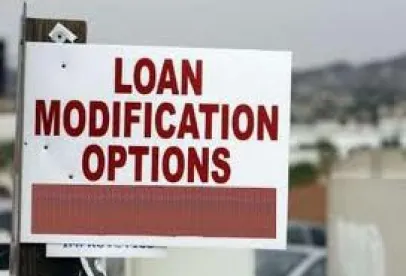On June 3, the United States Senate approved the "Paycheck Protection Program Flexibility Act of 2020" (H.R. 7010). The new law was signed by the President and became effective on June 5.
This law amends the CARES Act and makes significant changes to previous law and SBA rules relating to the Paycheck Protection Program.
This summary compares the key provisions of the new law to the affected provisions of the original CARES Act. If you would like to see this summary in table form, please click here.
PPP Loan Maturity
Original CARES Act Provision: PPP loans would have a maximum maturity of ten years from their origination dates, and the SBA's guidance provided that all PPP loans would mature and be payable after no more than two years from the date on which the borrower applies for loan forgiveness.
New Provision: PPP loans made on or after June 5 will have a minimum maturity of five years, and a maximum maturity of ten years, from the date on which the borrower applies for forgiveness. The extended minimum maturity provision applies only to PPP loans made on or after June 5. However, lenders and borrowers may mutually agree to modify the maturity terms of loans made before June 5 to apply the extended maturity provision.
Extension of Covered Period
Original CARES Act Provision: For purposes of the determination of the amount of a PPP loan that will be forgiven, the CARES Act provided for an eight-week (56-day) covered period beginning on the origination date of the loan.
New Provision: For new and existing loans, the covered period will be the period:
-
Beginning on the origination date of the loan (which SBA has indicated will be the date loan proceeds are disbursed), and
-
Ending the earlier of:
-
the date that is 24 weeks (168 days) after the loan origination date, or
-
December 31, 2020.
-
Borrowers who received loans before June 5 may elect to continue to use their eight-week covered periods under the original CARES Act provision.
The SBA's Interim Final Rules permit borrowers who pay employees on a bi-weekly or more frequent basis to elect to use an eight-week "alternative payroll covered period" that begins on their first payroll date following disbursement of their loans. It is not clear whether the new law affects the ability of borrowers to make that election.
Extension of Safe Harbor Deadline for Reductions in FTEs or Salaries/Wages
Original CARES Act Provision: The CARES Act provides for a decrease in the forgiven amount of a loan based on the extent of reductions in FTE or salary/wage levels during the covered period, but, in the case of reductions in FTE and salary/wage levels during the period February 15 through April 26, the borrower can avoid the decrease in forgiveness if it "eliminates" the reductions by restoring FTE and salary/wage levels to their February 15 levels by not later than June 30.
New Provision: For new and existing loans, the safe harbor deadline for eliminating reductions in FTE and salary/wage levels by restoring them to February 15 levels is extended to December 31.
Additional Safe Harbor for Reductions in FTEs
Original CARES Act Provision: There was no comparable provision in the original CARES Act.
New Provision: For new and existing loans, until December 31, the forgiven amount of a loan will be determined without regard to a reduction in FTEs that is due to:
-
An inability to both:
-
rehire individuals who were employees on February 15, and
-
hire similarly qualified employees for unfilled positions on or before December 31;
-
or
-
An inability to return to the same level of business activity at which the borrower was operating before February 15 due to compliance with requirements established or guidance issued by the Secretary of Health and Human Services, the CDC, or OSHA during the period of March 1 through December 31, related to maintenance of COVID-19-related standards for sanitation, social distancing or any other worker or customer safety requirement.
In either case, to qualify for this additional safe harbor, borrowers must document, in good faith, their inability to rehire or hire employees, or to return to their pre-February 15 level of business activity, and be prepared to provide that documentation with their forgiveness applications.
Use of PPP Loan Proceeds
Original CARES Act Provision: Not more than 25% of the forgiven amount of a loan could be attributable to non-payroll costs, and SBA's previous guidance provided that at least 75% of the proceeds of a PPP loan had to be used for covered payroll costs (although that 75% of loan proceeds requirement is not mentioned in SBA's published loan forgiveness application and Interim Final Rule).
New Provision: For new and existing loans, borrowers must use at least 60% of their PPP loan proceeds for covered payroll costs, and may use up to 40% of their loan proceeds for payment of covered non-payroll costs, including payment of interest (but not prepayments of interest or payments of principal) on covered mortgage obligations, payments of covered rent obligations, and covered utility payments.
Extension of Payment Deferral Period
Original CARES Act Provision: Lenders were required to defer payments of principal and interest for a period of not less than six months and not more than one year. SBA's guidance provided for a six-month deferral period.
New Provision: For new and existing loans, payments of principal and interest will be deferred until SBA determines the amount of the loan that will be forgiven and pays that amount to the lender.
Commencement of Payments in Absence of Forgiveness Application
Original CARES Act Provision: There was no comparable provision in the original CARES Act.
New Provision: For new and existing loans, if a borrower does not apply for loan forgiveness within ten months after the end of the borrower's covered period, payments of principal and interest on the loan will begin at the end of that 10-month period.
For borrowers with pre-June 5 loans who elect to continue to use their eight-week covered periods under the original CARES Act, payments of principal and interest on the loans will begin ten months after the last day of the eight-week covered periods if the borrowers have not applied for forgiveness during that period.
Delay in Payment of Employer Payroll Taxes
Original CARES Act Provision: Provisions of the CARES Act permitting employers to defer payment of employer payroll taxes did not apply to borrowers that received PPP loan forgiveness.
New Provision: Borrowers that receive PPP loan forgiveness are no longer precluded from deferring payment of employer payroll taxes to the extent permitted by the CARES Act.
Conclusion
Some provisions of the Paycheck Protection Program Flexibility Act of 2020 may raise new questions regarding the interaction between those provisions and the unchanged provisions of the original CARES Act. Similarly, it is unclear whether certain existing SBA guidance remains applicable and how that guidance will affect implementation of the new provisions. We expect that SBA will publish new guidance regarding the new provisions.
Fortunately, the new law provides a welcomed extension of time, which will permit borrowers whose covered periods are already coming to an end to understand the forgiveness process.





 />i
/>i

